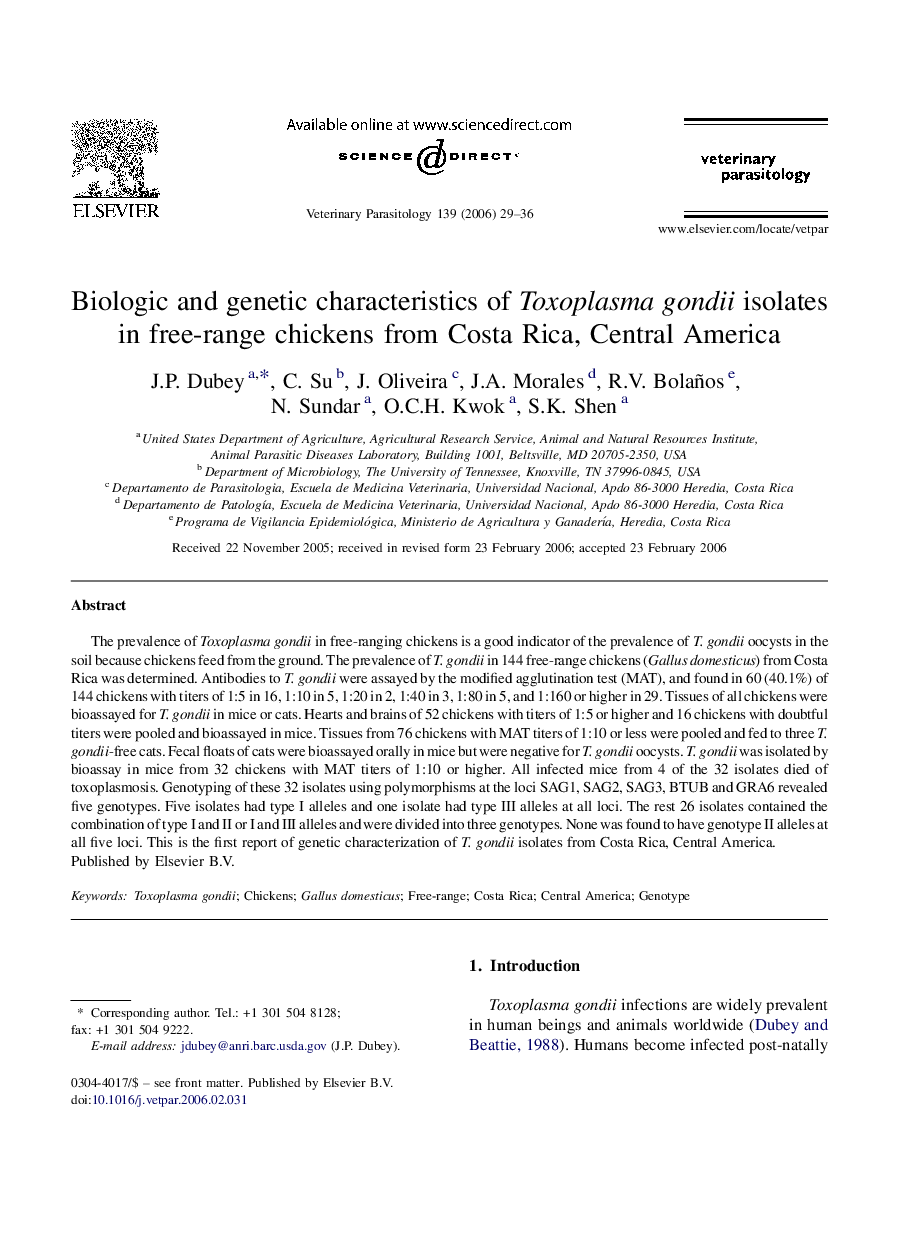| Article ID | Journal | Published Year | Pages | File Type |
|---|---|---|---|---|
| 2472473 | Veterinary Parasitology | 2006 | 8 Pages |
The prevalence of Toxoplasma gondii in free-ranging chickens is a good indicator of the prevalence of T. gondii oocysts in the soil because chickens feed from the ground. The prevalence of T. gondii in 144 free-range chickens (Gallus domesticus) from Costa Rica was determined. Antibodies to T. gondii were assayed by the modified agglutination test (MAT), and found in 60 (40.1%) of 144 chickens with titers of 1:5 in 16, 1:10 in 5, 1:20 in 2, 1:40 in 3, 1:80 in 5, and 1:160 or higher in 29. Tissues of all chickens were bioassayed for T. gondii in mice or cats. Hearts and brains of 52 chickens with titers of 1:5 or higher and 16 chickens with doubtful titers were pooled and bioassayed in mice. Tissues from 76 chickens with MAT titers of 1:10 or less were pooled and fed to three T. gondii-free cats. Fecal floats of cats were bioassayed orally in mice but were negative for T. gondii oocysts. T. gondii was isolated by bioassay in mice from 32 chickens with MAT titers of 1:10 or higher. All infected mice from 4 of the 32 isolates died of toxoplasmosis. Genotyping of these 32 isolates using polymorphisms at the loci SAG1, SAG2, SAG3, BTUB and GRA6 revealed five genotypes. Five isolates had type I alleles and one isolate had type III alleles at all loci. The rest 26 isolates contained the combination of type I and II or I and III alleles and were divided into three genotypes. None was found to have genotype II alleles at all five loci. This is the first report of genetic characterization of T. gondii isolates from Costa Rica, Central America.
